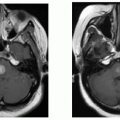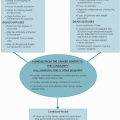Advance Directives, Decision Making, and Withholding and Withdrawing Treatment
Christine Grady
Advance directives and advance care planning evolved as a response to the wishes of most people to have some control over their medical care now and into the future. Advance directives were conceived of as a way to give individuals some control over future treatment and care decisions by providing an opportunity to specify choices and preferences in advance for use at a time when they might be too sick or incapacitated to participate in making decisions themselves. Progress in our ability to prolong life through the use of available technologies especially over the last several decades has increased awareness of the challenges of deciding when and how to employ such technologies. Public attention about the complexities of making decisions about end-of-life care and treatment, especially in the face of uncertainty about individuals’ previously expressed wishes, was stirred up by publicly debated cases such as Nancy Cruzan and Terry Schiavo (1,2). Most Americans die in the hospital, although an estimated 80% say they want to die at home. More than half a million Americans die of cancer annually, often supported by technology in the impersonal and isolated environment of an intensive care unit. Only an estimated 10% of people dying in intensive care can make decisions for themselves (3). Alzheimer’s dementia is increasingly common in the United States and a leading cause of death in people over 65 years of age (4). A study of elderly Americans who had died showed that approximately 30% required decision making at the end of life but lacked decisionmaking capacity (5). Facilitating treatment decisions, including those about treatment at the end of life, is essential for patients who cannot make decisions for themselves and for the patients’ loved ones.
The US Patient Self-Determination Act of 1990 requires all Medicare participating healthcare facilities to provide patients with information about their rights to make healthcare decisions, to ask patients at admission about advance directives, and to provide further information if desired (6). In the United States, all 50 states and the District of Columbia have statutes that support advance directives and make it permissible for physicians to follow them without fear of liability. Although there are some differences among state statutes, most allow the use of instructional directives and/or the designation of a proxy decision maker for healthcare decisions, and many states honor documents completed in accordance with another state’s laws. Meisel et al. pointed out that even if the legal formalities are not all met, written advance directives, as well as oral statements previously made by patients, can help to guide decisions about treatment (7). Available online resources allow anyone to download the specific forms and instructions for advance directives from each of the 50 states (8). State-specific forms are also available from state or municipal Departments of Health, hospitals, and some physicians’ offices. Forms and instructions are often available in languages besides English and sometimes can be found online, for example, Spanish and Chinese language California forms are available at http://coalitionccc. org/advance-health-planning.php. Recent initiatives in certain states provide the opportunity for individuals to complete their advance directive online and store it in a registry (9). Advance Directive/Living Will Registries are public or proprietary databases that electronically store advance directives and make them available to patients and providers when they are needed.
TYPES OF ADVANCE DIRECTIVES
Traditionally, there are two distinct general types of advance directives: the instructional directive and designation of a proxy. Most available forms—developed at the state level or by specialty organizations—allow one or the other or both. An instructional directive is a tool that allows an individual to express preferences or give instructions about future medical treatment and care for such a time when the individual is no longer able to make his or her own decisions. One of the earliest instructional directives, the living will, gives individuals the opportunity to state in writing their desire to accept or refuse a limited set of life-prolonging treatments, such as cardiopulmonary resuscitation (CPR) or artificial ventilation, under certain conditions.
Unfortunately, early living will statements of preference were often written so nonspecifically that they were not very effective in guiding treatment decisions. Over time, there were efforts to make instructional directives more treatment specific, to develop directives that better articulated patients’ general values and beliefs, and to use validated predrafted instructional directives (10,11,12,13).
Designating a proxy to make decisions at such a time a person cannot make them for himself or herself is the other traditional advance directive option. The designated proxy is referred to by several names, including Durable Power of Attorney for Health Care (DPA), Health Care Agent, Health Care Proxy, or medical power of attorney, often depending
on the state laws. Importantly, a DPA or medical power of attorney is distinct from a traditional power of attorney, which is a legal document that grants a proxy jurisdiction over financial and personal matters, an issue that sometimes causes confusion.
on the state laws. Importantly, a DPA or medical power of attorney is distinct from a traditional power of attorney, which is a legal document that grants a proxy jurisdiction over financial and personal matters, an issue that sometimes causes confusion.
Most people who have completed advance directives have assigned a DPA. Instructional directives and assignment of a DPA are complementary and patients may be well served by both designating a DPA and providing instructions. Assigning a DPA or proxy is helpful because it is difficult to anticipate many possible future healthcare situations and decisions, and specific instructions related to held preferences are helpful, since these can provide welcome guidance for the assigned DPA and medical team when making decisions.
Unfortunately, despite considerable efforts, evidence accumulated that advance directives were not as successful in facilitating patient-centered decisions at the end of life as originally anticipated (14). Large studies found that a relatively small percentage (20% to 30%) of patients—even seriously ill patients—had advance directives and that even when an advance directive existed it often had limited influence on treatment decisions at the end of life (15). Hickman et al. described several reasons that might explain the limitations on the usefulness of advance directives including (1) disproportionate focus on the legal right to refuse treatment rather than understanding patients’ underlying goals and values; (2) vague or unclear instructions or expressions of patients’ wishes (such as “Don’t keep me alive if I am a vegetable”); (3) inadequate attention to ongoing discussion and re-evaluation of previously expressed preferences; (4) little attention to integrating planning into clinical care; (5) narrowly privileging individual autonomy rather than recognizing the importance of social networks and relationships; (6) difficulty and significant stress for the designated proxy when asked to make decisions because of inadequate discussion about values and goals; and (7) uncertainty about whether the patient would want decisions to be made using a substituted judgment standard or want their proxies to take other considerations into account (16). Others pointed out that practical details such as where an advanced directive is kept and who knows about it often make it difficult or impossible to honor. A Pew Research Center’s 2006 survey found that over the years since the Patient Self-Determination Act, more people are thinking about and planning for their own medical treatment in the event of a terminal illness or incapacitating medical condition. About 42% of their survey cohort had experienced a friend or relative’s terminal illness or coma in the previous 5 years, and the issue of withholding life-sustaining treatment came up for the majority. In addition, most Americans are aware of living wills and in 2005, 29% said they had one compared with 12% in 1990 (17). Two studies that evaluated advance directives among elderly Americans who had recently died found that about two-thirds of the total (18), or of those who needed surrogate decision making, had an advance directive (19). Studies have shown that people who are older, have serious diseases and certain types of disease such as cancer, are Caucasian, of a relatively high socioeconomic status, know about advance directives, have a positive attitude toward end-of-life discussions, and have a long-standing relationship with their primary care physician are more likely to have an advance directive (6).
Focus on advance care planning as well as expansion of the types of advance directive processes and forms and complementary initiatives have attempted to preserve the goal of advancing patient autonomy and respect for surviving interests. Initiatives such as Five Wishes, Let Me Decide, Respecting Choices, Physicians Orders for Life-Sustaining Treatment (POLST) paradigm, and others have aimed to find ways to provide patients with the opportunity to direct some future treatment decisions, while trying to overcome some of the previously documented challenges. “Five Wishes” includes appointment of a proxy and documentation of a range of issues that people might care about but are not usually included in a traditional advance directive, including emotional, spiritual, and personal needs (20). “Let Me Decide” was developed in Canada based on empirical research and the booklet and forms have been translated into multiple languages. The program offers patients and families an opportunity to document choices about level of care, nutrition, CPR, and treatment of lifethreatening illness (21). “Respecting Choices” began in Lacrosse Wisconsin through the Gundersen Lutheran Hospital system as a community-wide planning system (22). It uses a staged approach to advance care planning, emphasizes training of physicians and healthcare providers and advance care planning facilitators, and encourages the use of hospice and palliative care services. Besides the fact that most Lacrosse residents have advance directives, the hospital system has experienced a reduced number of hospital days at the end of life and lowered Medicare spending compared with other centers. Ironically, this successful program urged coverage for end-of-life conversations between physicians and patients that was labeled “death panels” and pulled from consideration as part of the 2010 health care reform proposals (23). POLST is a system of advance care planning and documentation that offers patients an opportunity to indicate the types of life-sustaining treatment that they want and converts their preferences into written medical orders (on a brightly colored form) that transfer with patients across treatment settings (24). POLST is an actionable medical order that can be based on a previously completed advance directive or on expressed wishes for patients who do not have advance directives. Patients are informed about available treatment options for their current conditions and their preferences for CPR, feeding tubes, and other medical treatments are discussed. These wishes are then documented on a standardized medical order form. Healthcare providers in hospitals or nursing homes agree to honor these orders in an effort to improve the quality of end-of-life care. POLST enables patients to make choices about care options that range from aggressive treatment to limited interventions to comfort care.
ADVANCE CARE PLANNING
The process of advance care planning encompasses a number of important and related activities, including discussion of clinical circumstances, prognosis, and goals in context, deliberation and communication about values and goals, and the development of plans and preferences for future care to approximate those goals (25). Advance care planning is a more iterative and interactive process than simply filling out an advance directive and precedes and surrounds the completion of a written advance directive (Chapter 57). As part of an advance care planning process, healthcare providers give patients and families information about the patient’s current clinical circumstances, likely trajectory and possibilities, and available treatment options. Discussion of the patient’s values and goals can help guide clinicians and proxy decision makers when called upon later to make decisions. Any plans and decisions made and documented should be revisited if possible whenever the patient’s clinical or social situation changes or when a patient wishes to re-examine the goals or directives. A written advance directive serves as documentation of decisions made through the process of advance care planning and connects the process of deliberation with specification about who and how decisions will be made for the patient in the future.
HELPING PATIENTS CHOOSE AND ASSIGN A HEALTHCARE PROXY OR DPA
Physicians and other healthcare providers can do several things to help patients and the selected DPA understand important aspects of selecting a healthcare proxy or DPA. The patient should be reassured that his or her DPA will only be invoked and asked to make decisions, when the patient is unable to make decisions for himself/herself, after a determination of decision-making capacity. (Assessment of decision-making capacity is addressed below.) Both patient and DPA should be informed that, when invoked, the DPA will have the authority to make all treatment and care decisions that the patient would be asked to make if he or she were able. These might include decisions about treatment options, choosing a doctor, a caregiver, and a place of care, accepting or refusing medical treatments including life-sustaining treatments, making discharge and transfer decisions, and authorizing the release of medical information, among others.
Most commonly, a DPA is asked to make decisions based on the patient’s previously expressed wishes. However, in situations where previously expressed wishes do not provide sufficient or any guidance, the DPA might be asked to use their knowledge of the patient to imagine what the patient would have wanted and make a decision using “substituted judgment.” Substituted judgment is a complex concept and can be very hard to implement, especially when the patient is in a situation that neither he/she nor the DPA had previously considered or discussed. When substituted judgment is not feasible, the DPA may be asked to make decisions based on the patient’s best interests. Some individuals may want to specifically authorize their DPA to have more discretion or instruct them to consult with other family members or loved ones when making health-related decisions. Data suggest that surrogates often do rely on other factors, including their own best interests or mutual interests that they share with the patient (26).
Stay updated, free articles. Join our Telegram channel

Full access? Get Clinical Tree







